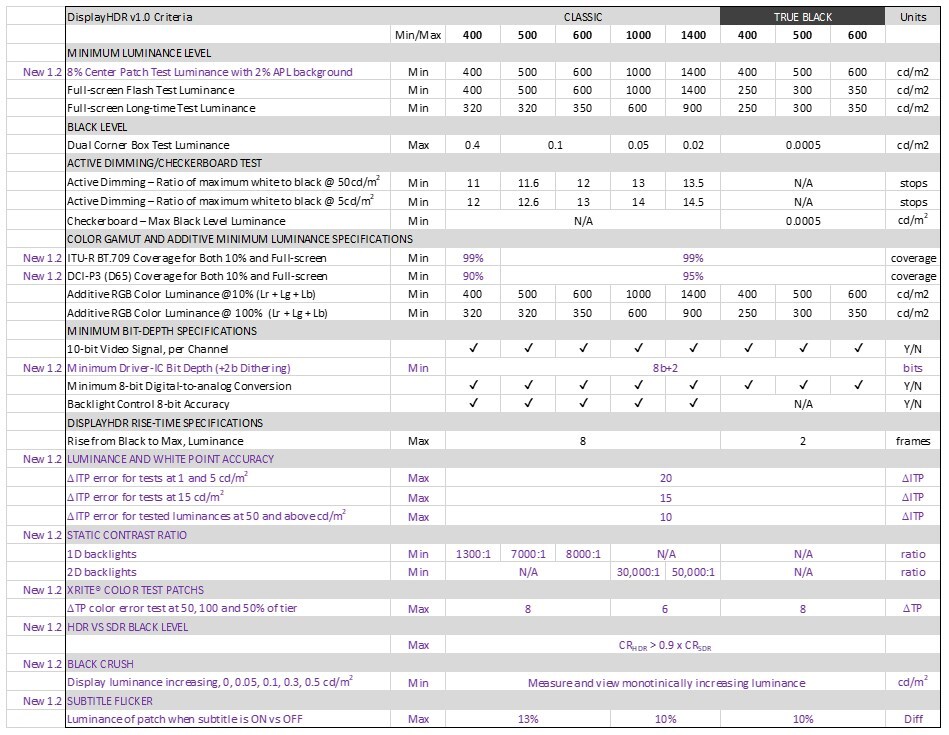Roland Wooster, an engineer at Intel who also heads the VESA Display Performance Metrics group, characterised the latest version of VESA DisplayHDR as a “tightening” of the specification while broadening the scope and criteria of the testing. The idea is to enhance the visual quality of the monitors you purchase, but one of the tests will also affect how much electricity they use.
High-Dynamic Range (HDR) displays may look stunning when done right, replicating how your eyes adapt to bright lighting, particularly as you emerge from the darkness. However, displays struggle to preserve dark sections of the screen and sustain detail in low-illuminated environments. HDR displays are available in DisplayHDR 400, 500, 600, 1000, and 1400 specs, which relate to how much light they can generate in nits. You will require an HDR-capable GPU and monitor, as well as material that has been optimised for the format.

To improve the classification of how panels can reproduce HDR content, VESA is updating its DisplayHDR specification to better align with the new and upcoming products arriving on the market. The latest specification should also motivate manufacturers to create better low-end displays to get the most basic DisplayHDR certification (DisplayHDR 400).
One of the assumptions in the new specification is that you have a MiniLED display. A basic LED display features a single backlight that adjusts the brightness of the whole display. OLED screens can effectively switch individual pixels on and off for infinite contrast. Mini or MicroLED displays fall somewhere in the centre, with hundreds or thousands of individual LED backlights (local dimming) to separate parts of the screen. One of the changes to the standard is to cease testing two sections of the screen — white and black — and instead use a “starfield” pattern that activates the other local dimming zones.
Another change coming with the new DisplayHDR 1.2 standard is to bring some of the visual-quality characteristics associated with higher-priced displays down to lower price points. DisplayHDR 400 now has a colour gamut of 99% sRGB and 90% DCI-P3, which is almost identical to the colour spectrum required by more costly DisplayHDR 1000 screens. It also increases the bit-depth needed to 8 bits + 2 bits of dithering (8-bit+FRC).
The difference between SDR and HDR content is that HDR displays use brightness adjustments to achieve HDR visual enhancements, while SDR screens don't. That implies an HDR display must maintain colour accuracy when the panel lightens and darkens. DisplayHDR 1.2 significantly enhances colour testing to validate that accuracy across three brightness levels. The new specification also assures that an HDR display performs better with SDR material and does not increase the dark level.
The brightness and white-point accuracy testing range has also changed, rising from 1 nit to 100% of the tier level, such as 600 nits for DisplayHDR 600. Moreover, VESA has implemented single-image contrast ratio criteria, which will significantly enhance contrast ratio and image quality, particularly for the lower-cost DisplayHDR 400, 500, and 600 tiers.
Lastly, DisplayHDR testing now includes a “black crush test“. In very shaded places, some displays may just give up and show the whole picture as a uniform black rather than preserving the detail. The test includes brightness testing at multiple fractions of a nit to verify that the features are not “crushed” to a pure black.
Although the VESA DisplayHDR 1.2 specification has already been defined, its impact won't be immediate. VESA will keep the DisplayHDR 1.1 definition and certification in place until 2025 (and 2026 for laptops) to protect existing goods under development.
Discuss on our Facebook page, HERE.
KitGuru says: Do you agree with the VESA DisplayHDR 1.2 specification changes, or should VESA make it more/less demanding?
 KitGuru KitGuru.net – Tech News | Hardware News | Hardware Reviews | IOS | Mobile | Gaming | Graphics Cards
KitGuru KitGuru.net – Tech News | Hardware News | Hardware Reviews | IOS | Mobile | Gaming | Graphics Cards


